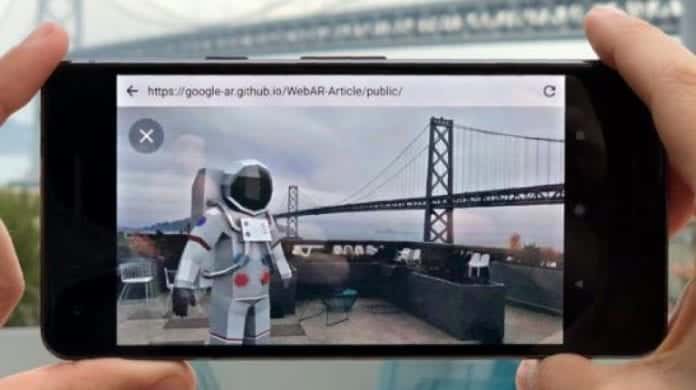Google is working on bringing AR’s magic to Chrome with downloadable 3D objects
Google recently unveiled its experimental efforts to integrate Augmented Reality (AR) features into the mobile and desktop web using its Chrome browser.
The browser-based prototype version of AR called ‘Article’ is a 3D model viewer, which not only runs on Chrome, but also works with all other web browsers.
“In the next few months, there will be hundreds of millions of Android and iOS devices that are able to provide augmented reality experiences – meaning you’ll be able to look at the world through your phone, and place digital objects wherever you look,” Google’s Reza Ali and Josh Carpenter wrote in a blog post. “To help bring this to as many users as possible, we’ve been exploring how to bring augmented reality to the web platform, so someday anyone with a browser can access this new technology.”
In order to convey that the model is 3D and interactive and not just a static image, the model rotates to some extent in response to the user scrolling. The new prototype allows developers to create 3D models that can be downloaded on mobile devices. Using the device’s cameras and built-in sensors, users will then be able to place those 3D models in real-life environments.
“When Article is loaded on an AR-capable device and browser, an AR button appears in the bottom right. Tapping on it activates the device camera, and renders a reticle on the ground in front of the user,” Ali and Carpenter said. “When the user taps the screen, the model sprouts from the reticle, fixed to the ground and rendered at its physical size. The user can walk around the object and get a sense of scale and immediacy that images and video alone cannot convey.”
If Article is loaded into a desktop browser with a 3D model, it triggers AR content that would allow the user to view a specific element from all angles. For instance, users will be able to view a 3D model and manipulate it by dragging to rotate and scrolling to zoom in or out. When placed on a web page, the model could be animated in a way similar to a GIF. On the other hand, on mobile devices, users will be able to touch and drag to rotate, or drag with two fingers to zoom in.
“With augmented reality, the model comes alive. The unique power of AR is to blend digital content with the real world,” said the developer duo, who added: “So we can, for example, surf the web, find a model, place it in our room to see just how large it truly is, and physically walk around it.”
Basically, Google through Article wants web developers and content managers to start experimenting by bringing AR elements to web browsers. Developers who are interested in trying it out now for themselves, can do so by visiting this website.
Source: Google

